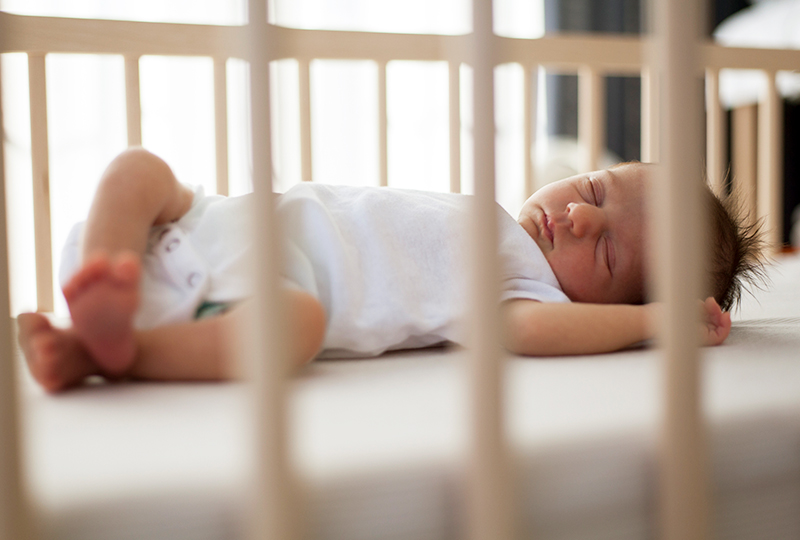Guard against sudden infant death with these crucial tips for infant sleep.
One topic that comes up frequently with new parents is safe sleep — and it’s no wonder. According to the National Institute of Health’s Task Force on Sudden Infant Death Syndrome (SIDS) and the Committee on Fetus and Newborn, nearly 3,500 newborns die each year from sleep-related causes, including SIDS and accidental suffocation in bed.
Deaths from SIDS are those that happen in apparently healthy infants, with no explainable cause. “Some babies are inherently at greater risk, for reasons we don’t understand,” said Dr. Scott Lancaster, a pediatrician with Pediatric Primary Care at Monroe Carell Jr. Children’s Hospital at Vanderbilt. “Our current understanding is that sleep-related deaths occur when these vulnerable babies are exposed to an unsafe sleep environment. Infants aged less than 4 months and premature infants are at the highest risk. Especially for this age group, we urge parents to keep their child’s sleep environment as controlled and safe as possible.”
SIDS deaths dropped dramatically in the United States after the “Back to Sleep” campaign, which urged parents to lay infants on their backs for sleep, began in 1992. One review of SIDS research found that from 1992 to 2001 alone, the number of infants sleeping on their backs rose from 13 to 72 percent. The SIDS rate in the U.S. was cut in half during that period.
“Studies have not explained exactly why infants are at greater risk of sudden death while sleeping on their tummies,” Lancaster said, “but the link between sleeping position and the rates of SIDS make it clear that placing babies on their back is the safest way to put them to bed.”
Babies can also die suddenly in their sleep from other causes that are not SIDS, such as suffocation or strangulation. “We understand that parents want to be close to their children and make sure they are safe. That’s why the American Academy of Pediatrics recommends sleeping in the same room, but not the same bed, until at least 6 months of age,” he added.
The “ABCs of safe sleep” are rules of thumb that pediatricians like Lancaster pass along to help protect infants from SIDS and other sleep-related hazards: All babies should sleep Alone, on their Backs and in the Crib.
A: Alone
Never allow other children or pets to sleep in your baby’s crib. Also, keep toys, pillows, bumper pads and loose blankets out of your baby’s crib. Consider using a sleep sack to replace the use of blankets.
B: Back
Your baby should always be placed on their back to sleep during nap time and at night. Once your baby is able to roll from back to stomach and stomach to back, they may be allowed to remain in whatever sleep position they assume during the night. However, all infants should be placed to sleep on their back until 1 year of age.
C: Crib
Always place your baby to sleep in their own crib, bassinet or play yard that meets current safety standards. Your baby’s crib should have a firm mattress with a tight-fitting sheet, and should have a flat, non-inclined surface. Do not allow your baby to sleep with you in your bed.
Additional tips:
- Avoid secondhand smoke and smoking during pregnancy.
- Breastfeed your infant as long as possible. Breastfeeding can help to reduce the risk of SIDS (Sudden Infant Death Syndrome).
- Do not overheat your baby’s room. The recommended temperature is 65 – 72 degrees.
- Make sure to teach all individuals who may handle your infant about the importance of safe sleep.
- Share a room with your baby preferably for a year, but for at least six months. The baby should be in his or her own crib.
You can read more about the American Academy of Pediatrics’ safe sleep guidelines here.

